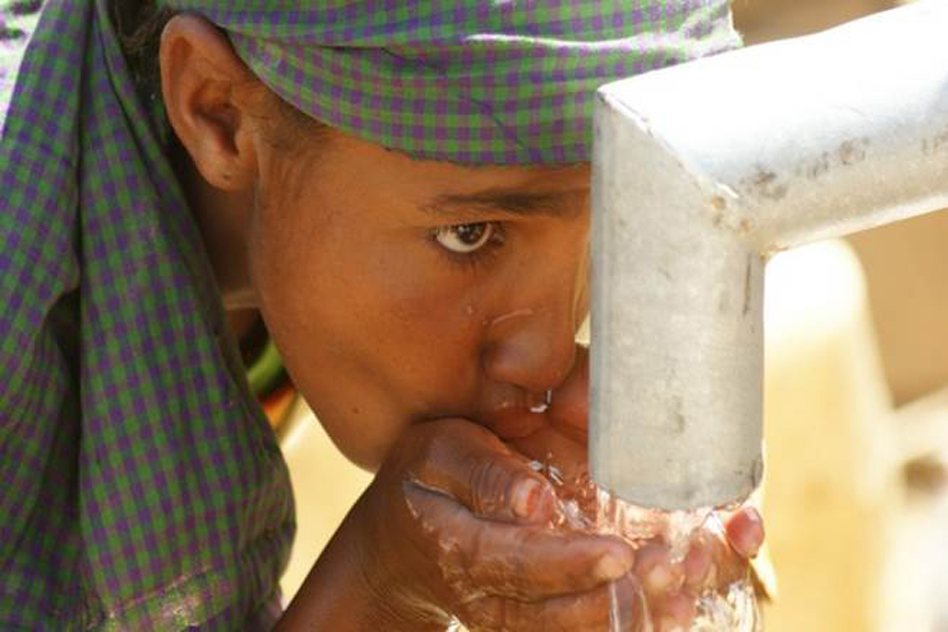
UP: 748 Habitations In 17 Districts Affected After Consuming Arsenic Contaminated Water Says Uma Bharti At Lok Sabha
28 July 2018 1:42 PM GMT
Editor : Ankit Sharma Sharma
Green tea Addict | A Tree Hugger | Born for Change
A total of 748 habitations in 17 districts of Uttar Pradesh have been affected after consuming arsenic-contaminated underground water. These numbers were revealed by Minister of Drinking Water and Sanitation, Uma Bharti, at a Lok Sabha session on July 26, 2018. An MP, Devendra Singh put forth four questions related to arsenic pollution in water in the district, and the information came to light as the minister answered the questions.
Answers to the questions
Uma Bharti, while citing data recorded till March 31st in the Ministry’s Integrated Management Information System (IMIS), the affected parts are Ambedkar Nagar(10), Azamgarh (2), Bahraich (538), Balia (107), Balrampur (1), Basti (7), Deoria (8), Gorakhpur (8), Kheri (23), Kushi Nagar (19), Lucknow (1), Maharajganj (3), Mau (8), Sambhal (1), Sant Kabeer Nagar (6), Siddharth Nagar (5), Sonbhadra (1).
Upon asking the provisions made by the Government to supply safe drinking water in these districts, the respective Ministry said that the State Government is responsible for acting towards it. Nevertheless, the Central Government is providing the technical and financial support to the State Governments through centrally sponsored National Rural Drinking Water Programme (NRDWP).
Provisions by Central and State governments
In addition to this, Indian Government has launched National Water Quality Submission (NWQSM) under NRDWP, to quantify the amount of arsenic and fluoride in water across the country, including Uttar Pradesh. Apart from this, the State Government has been providing safe drinking water to all the districts of Uttar Pradesh through Sanitation Project for Low Income States (RWSSP-LIS) and Community Water Purification Plants (CWPP).
The answer further stated that Uttar Pradesh Government had spent Rs.1317.08 crore in 2015-16; Rs.891.96 crore in 2016-17; Rs.990.60 crore in 2017-18; and the forecast for 2018-2019 is Rs.1240 crore in this regard.
The answer also listed some provisions which are taken up by State governments to tackle the problem of contaminated water which includes capping the aquifer to restrict contamination and providing safe water through stand posts.
Regarding the number of areas which are benefited and future forecast, the ministry said that the coverage and benefits area continuous processes. They are divided into three categories as follows –
1) Fully covered – Rural habitations getting at least 40 litres per capita per day of safe drinking water. This result was found to be 98.57%
2) Partially covered – Rural habitations getting less than 40 litres per capita per day of safe drinking water. This result was found to be 0.90%
3) Quality Affected – Rural habitations wholly affected by the contaminated water. This result was found to be 0.53%
Fight against contaminated water
According to the statistics of the Ministry of Drinking Water and Sanitization, as reported by Hindustan Times, approximately 1.47 crore people across the country fight against dangerous diseases due to the consumption of contaminated water.
The most hazardous elements which result in such diseases is arsenic. As reported by Hindustan Times, earlier this year, the arsenic is present above the permissible limits in 16,889 areas. Apart from this, around 12,029 areas have been affected by the presence of fluoride in drinking water. Also, 2384 areas in the country have a high level of heavy metal contamination. Iron, another hazardous element has been found in the drinking water of 23613 areas and nitrates have been present in 1809 areas of India.
According to this report of Hindustan Times, West Bengal and Assam occupy the top two ranks respectively in the arsenic contamination of water.
When it comes to fluoride contaminations, the state of Rajasthan accounts the highest number of fluoride present in water, while West Bengal, Bihar and Uttar Pradesh also have some high figures.
Dangers of contaminated water
Water, an essential part of life, contains many minerals. By the time, water reaches to the consumer; it gets contaminated by various elements. Arsenic is the most dangerous contaminant of water. Regular intake of such contaminated water can cause skin cancer, lung cancer, kidney cancer, which are incurable diseases.
Another such contaminant is fluoride. It causes discolouration of teeth and hacks the neurological system of the body.
The presence of Iron does the least damage to the body, but it can dig a hole in your pockets as it affects the digestive system.
The Logical Indian Take
Water is a necessity and people should not be subjected to drinking unsafe water. While it is disheartening to see such dismal numbers of people being affected with arsenic contamination, more efforts should be put in by the state and central governments to help make clean water more accessible to the people.
Also Read: What We Can Learn From UP’s Healthcare System
Also published on Medium.
 All section
All section













